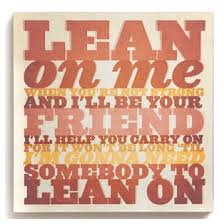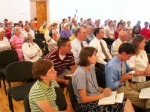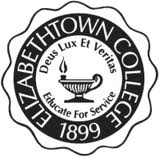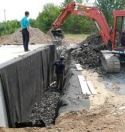 The Five-Fold Can Be A Fluid Model
The Five-Fold Can Be A Fluid Model
I have written several manuscripts about the five fold, still trying to decide what to do with them. I wrote a Master’s Thesis in 1999 researching the history of each of the five fold in British and American history. I rewrote it in simple language in a manuscript I called Revealing and Releasing Jesus. I followed it with four fictional novels based on the five fold: Five, Five=One, Five Squared, One of the Five. Someone recently commented that I had given them a neat formula, only to crush and destroy it by having varying applications in different situations. They discovered the secret to my five-fold formula or star shaped circle; it is very versatile and very fluid.
The church loves simple models and formulas. If a church perfects a successful model, others immediately duplicate it. Leadership conferences are born around it, but the Holy Spirit isn’t into duplicating. He is into creating and loves to speak into unique situations. The Holy Spirit applies Godly principles to bring the best outcomes for the kingdom of God.
I believe the five fold to be linear based and should not be hierarchal in nature, for no one five-fold passion should be elevated above another. Each with its own place, vision, voice, and point of view, if allowed to dominate or be overpowering, can bring division in the body. If that same vision, voice, and point of view be in a submissive, service spirit as equal peers, it can bring unity to the body. The five fold is powerful when it operates in unity from each, through each, and to each of the five. It creates a circle of love.
They keys to this models success is found in allowing the Holy Spirit, the Spirit of Jesus Christ, to be in charge, for it is a very fluid spirit, working in many ways naturally and supernaturally. The Spirit knows the will of the Father, how to glorify the Son, and how to instruct the saints, the Bride, the Church. Giving up control is difficult for any institution because control defines an institution’s image. Giving up control to something unpredictable and fluid can be scary. The Church’s stringent control over the Holy Spirit led it into the Dark Ages. Why does the church old on to its traditions, just as their Jewish forefathers had, getting the same frustrating results? When the early Jewish founding fathers of the Church yielded to the Holy Spirit rather than traditions, a powerful movement of God emerged, the Church.
So I ask you, the reader, “Can you trust the Holy Spirit?” Are you willing to allow Him to “teach you all things” about the kingdom of God. Is he directing your spiritual journey? Are you holding on to control, or are you willing to release it to him? For the five-fold to work effectively, relinquishing and releasing is mandatory. The model won’t work if the Holy Spirit isn’t in charge! It will only be another lifeless institutional model if implemented without the Holy Spirit’s leading, guidance, and instruction.
 In the next several blogs we will look at this model and its potential if we yield to the unpredictable, the Holy Spirit to initiate it, mold it, lead it, direct it, and form it according to the diverse believers’ talents in the body of Christ. Institutions love to reproduce themselves, thinking their way is the only right way which brings division in the body of Christ. The Holy Spirit produces organisms, living forms of a living gospel of a living Word in unique and diverse ways, yet producing unity. If Jesus prayer of John 16 is to come true, unity is mandatory. “Father, make them one as we are one!” The “laying down of your life for your brethren” is the mandatory ingredient for unity, and the Holy Spirit who works with the heart and the spirit of man can do that by bringing repentance, revival, and restoration.
In the next several blogs we will look at this model and its potential if we yield to the unpredictable, the Holy Spirit to initiate it, mold it, lead it, direct it, and form it according to the diverse believers’ talents in the body of Christ. Institutions love to reproduce themselves, thinking their way is the only right way which brings division in the body of Christ. The Holy Spirit produces organisms, living forms of a living gospel of a living Word in unique and diverse ways, yet producing unity. If Jesus prayer of John 16 is to come true, unity is mandatory. “Father, make them one as we are one!” The “laying down of your life for your brethren” is the mandatory ingredient for unity, and the Holy Spirit who works with the heart and the spirit of man can do that by bringing repentance, revival, and restoration.
Let’s continue to look at scenarios of how the Holy Spirit can work in this model, uniquely through the people yielding to it and their specific situations.







































































